 |
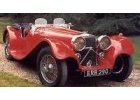 |
|
1936
While not pioneering any technical innovation that characterised the post-war Jaguar models, no one could deny the SS100's fine performance, handling, styling, build quality and competitive price. More>> |
 |
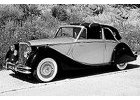 |
|
1948 - 1951
At the 1948 Motor Show, Jaguar was to unveil both the Mk. V and XK 120 - the first new design post war Jaguars. The Mk. V was available with either a 2.5 litre or 3.5 litre engine, the smaller capacity 2.5 being the "entry" model for the Mk V range. More>> |
 |
 |
|
1948 - 1954
Designed to be a low-volume dream car rather than a high production motor car, the Jaguar XK120/140/150 became an overnight sensation and highly profitable. More>> |
 |
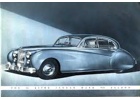 |
|
1950 - 1956
It wasn’t until 1954 that a car with fully automatic transmission and two-pedal control became freely available in Australia at a price below £2500 – somewhat affordable! The car was the Jaguar Mark VII saloon fitted with the American Borg-Warner automatic transmission similar to that used in U.S.A. on the Studebaker. More>> |
 |
 |
|
1954 - 1957
The new Jaguar XK140 featured similar body pressings as the XK120, but the doors were now 3 inches longer as the engine, bulkhead and windscreen had been moved forward to improve the interior space. More>> |
 |
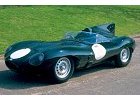 |
|
1955 - 1957
Although Jaguar were to leave racing at the end of 1956, private teams would continue to enjoy success driving the D-Type. At the 1957 Le Mans, D-Types were to finish first, second, third, fourth and sixth! A great success, but without the arch rival Mercedes-Benz perhaps not terribly surprising. More>> |
 |
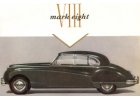 |
|
1956 - 1959
The 1956 - 1959 Jaguar Mark VIII was a slightly heavier replacement for the Mark VII/VIIM sedans. It featured minor styling changes and more power, but was otherwise the same. More>> |
 |
 |
|
1957 - 1960
The interior of the XK150 featured walnut veneer on the dashboard, while mechanically one of the main changes were the Dunlop disc brakes now fitted both ends, replacing the previous disc/drum setup. More>> |
 |
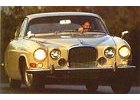 |
|
1961 - 1970
This car still holds the title as being the broadest British production saloon being 1.93 metres across its rear. It offered independent suspension and power-steering and was half the price of its rivals. More>> |
 |
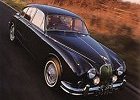 |
|
1961 - 1975
The Mk. II was the last proper sports saloon made by Jaguar and became somewhat of a 60's icon. Quiet, comfortable and stately in appearance, under the Mk. II bonet lay an eager and impressive motor capable of 201 km/h in 3.8 litre form. More>> |
 |
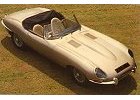 |
|
1961 - 1975
This car was arguably the most beautiful sportscar of the 1960's with its cool aerodynamics and unashamed showmanship. More>> |
 |
 |
|
1971 - 1975
By 1972 the E-Type Jaguar was starting to show its age. Not in the design department of course – the damn thing was beautiful from any angle and would remain that way time immortal. More>> |
 |
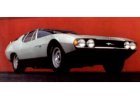 |
|
1967
Although the Bertone Jaguar Pirana was never intended to be more than a concept car, it was a fully functioning vehicle worthy of supercar status, and more importantly was completed in record time using parts already available courtesy of an E-Type donor car. More>> |
 |
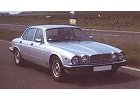 |
|
1968 - 1987
The XJ6 was launched in 1968 with a design that boasted ride comfort, quietness and great road-handling. It was a front-engined, rear-wheel drive, coil-sprung saloon and had a ride that was softer and quieter than a Rolls Royce. More>> |
 |
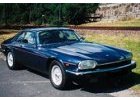 |
 |
1975 - 1991
Launched as the replacement for the E-type in 1975, and available in either coupe or convertible format, the XJ-S is now getting the recognition it deserves. More>> |
 |
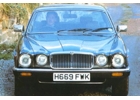 |
 |
1979- 1992
Jaguar's of the 1970's were never perfect. Like all others, there were design and manufacturing weaknesses. They had problems and failures. But compared with their international rivals, Jaguar's XJ saloons were unrivalled. Bob Knight was the chief architect of the original XJ chassis, and by the time the Series III was released, he had been promoted to Jaguar's Managing Director. More>> |




